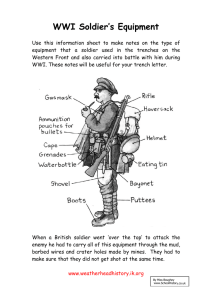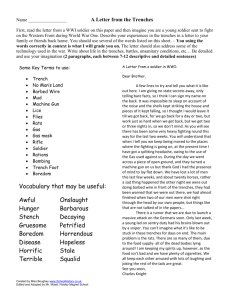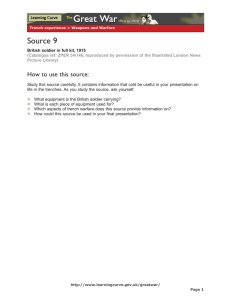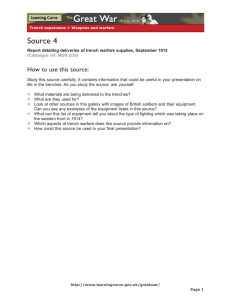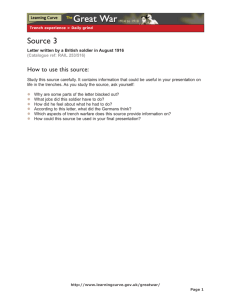Objective: life in a trench for a WWI soldier.
advertisement
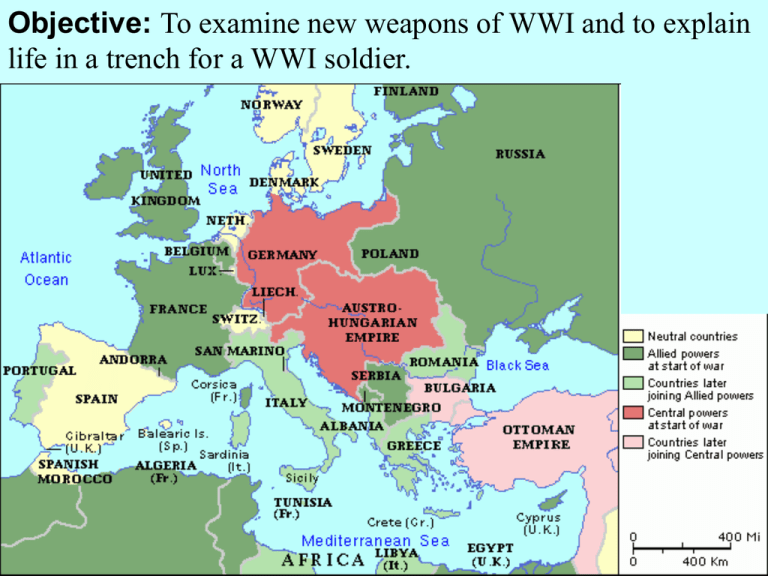
Objective: To examine new weapons of WWI and to explain life in a trench for a WWI soldier. WWI – Modern Warfare • World War I was the first “modern war” • New Weapons: – – – – – – Grenades, Airplanes Machine guns Barbed wire Submarines Poison gas Poison Gas • Germany introduced poisonous gas • Soldiers were issued gas masks for survival • Being gassed could leave you blind or dead Poison Gas Deaths: 1914-1918 Country Non-Fatal Deaths Total British Empire 180,597 8,109 188,706 France 182,000 8,000 190,000 United States 71,345 1,462 72,807 Italy 55,373 4,627 60,000 Russia 419,340 56,000 475,340 Germany 191,000 9,000 200,000 Austria-Hungary 97,000 3,000 100,000 Others 9,000 1,000 10.000 1,205,655 91,198 1,296,853 Total Trench Warfare • One of the most and distinctly unique ideas for WWI was the use of fighting in trenches Trench Warfare Trench Warfare – type of fighting during World War I in which both sides dug trenches protected by mines and barbed wire Cross-section of a front-line trench Trenches in World War I • Most trenches were 4-6 feet deep and 4-8 feet wide • The SHOVEL was the most important tool you received as a soldier – Many times trenches collapsed or were destroyed by grenades and had to be dug again. • Trenches were sometimes very close. Even close enough to hear the enemy through the trench walls. British trench, France, July 1916 (during the Battle of the Somme) Pill box- living quarters below “OVER THE TOP” • When your commanding officer said “over the top” the soldier had to come out of the trench and travel across “no man’s land” • A soldier had about a 30 second life expectancy in “No Man’s Land” – It was hard to make it through barbwire with bullets flying Problems in Trenches • • • • WEATHER RATS LICE TRENCH FOOT

